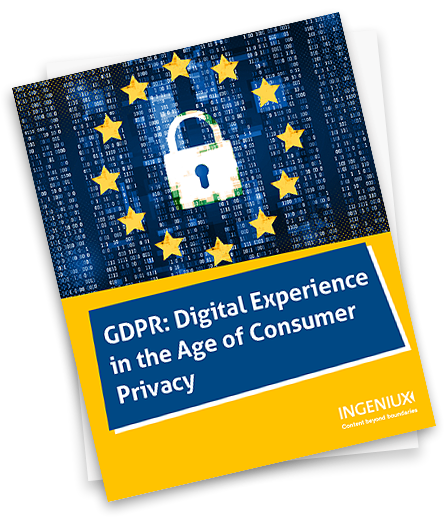The GDPR is going to change the way you do business, and for many, that's a good thing.
Think about it this way:
"While complying with GDPR regulations is definitely a challenge for all organizations currently operating with EU citizens, success would lie in seeing these new regulations as an opportunity to achieve competitive differentiation rather than just a barrier or a challenge. This presents an exemplary opportunity for organizations to drive digital trust for their brands and ensure that they not only comply with these regulations but also end up making a mark for themselves in this competitive environment."
What does that mean? Is it an opportunity?
The Age of Consent
Let's face it; your customers are becoming much more concerned about their privacy. They want to know why you want their information and what you are going to give them in return for it. And if they find out you've used it inappropriately, or not used it to better their experience, watch out.
You only have to look at what happened with Facebook to understand the privacy challenge. The GDPR is the EU's way of dealing with the misuse of the personal information of its citizens. One of the biggest changes is in how you capture private data.
From the GDPR Key Changes:
"The conditions for consent have been strengthened, and companies will no longer be able to use long illegible terms and conditions full of legalese, as the request for consent must be given in an intelligible and easily accessible form, with the purpose for data processing attached to that consent. Consent must be clear and distinguishable from other matters and provided in an intelligible and easily accessible form, using clear and plain language. It must be as easy to withdraw consent as it is to give it."
You have to change the way you capture information about your visitors and customers. When you ask them to register, your terms of use will have to be explicit and easily understood. You won't be able to drop a cookie on a visitor's desktop without first asking permission to do it, and you will have to tell them what information you are storing and why.
These changes only apply to EU citizens, but it seems like the right time to make the changes for everyone and deliver an experience all your users can trust and enjoy.
This is the age of consent. And it's a perfect opportunity to step back and look at your customer experience and associated content strategy from a new angle.
Great Customer Experience is No Longer an Option
Companies can end from a bad customer experience, but there are still many out there who don't make the effort required to make customers happy.
"Marketers will not legalize or “software” their way out of the GDPR challenge. They must innovate, design, and create their way into the GDPR. The one thing absolutely clear since we at CMI started talking about GDPR more than a year ago is that it is the biggest opportunity in more than a decade for content marketers to become strategic." Robert Rose, Content Marketing Institute
Privacy is not the end of a great experience; instead, think of it as the beginning of an even better experience. If you haven't done it already, document your current web experience. Make a note of the following:
- pages where you drop a cookie and update it,
- where you have registration forms
- where your Terms of Use web pages are and what they say,
- the pages you have applied personalization or targeted content
You'll also want to look at your analytics to see where visitors are spending their time on your website, what forms are converting, how long they stay on your website, what pages have the highest bounce rate and so on. Scan search analytics to understand what visitors search for on your site.
Revisit your customer journey and confirm the web pages that are the most important to visitors. Identify where they are most likely to share additional information about themselves to get more information or a more personalized experience.
Armed with all this information, it's time to evaluate your web experience and make some changes. Do you need to personalize every page? Which ones are most important and are you providing the necessary information? Are you missing key content on your website?
If you knew more about the visitor could you provide more relevant content?
As you redesign your customer experience, keep the GDPR in mind, ensuring all your changes support the regulation.






